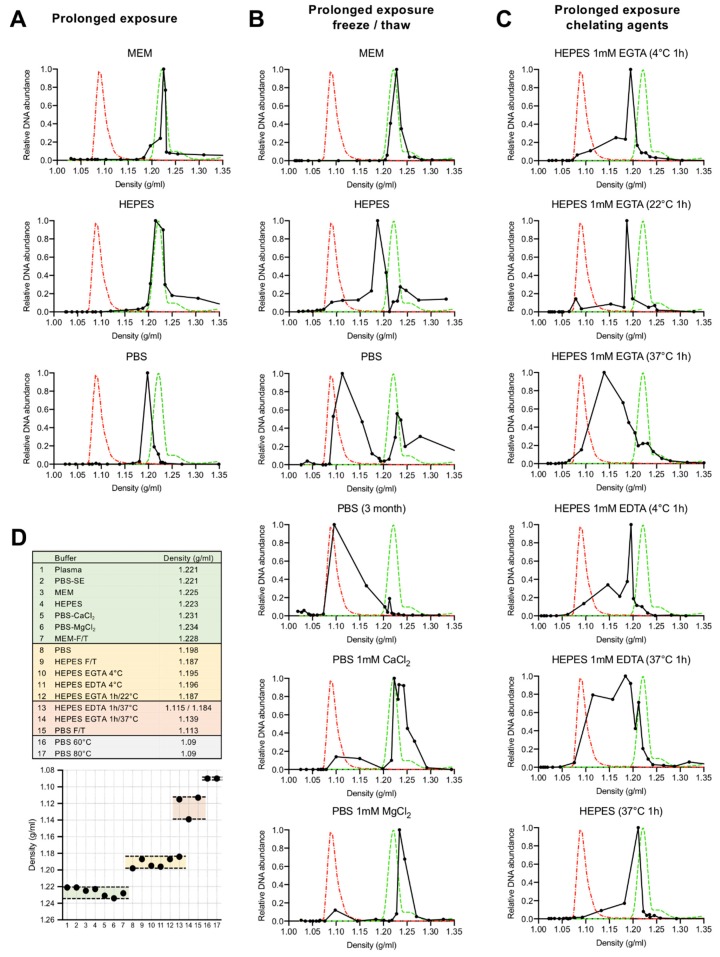Figure 2.
Influence of divalent cation depletion on the density of B19V. Virus from infected plasma was pelleted through 20% sucrose cushion, resuspended in different buffers and stored at 4 °C for one month. Fractions from iodixanol density gradient ultracentrifugation were quantified by qPCR. (A) Effect of prolonged (one month) incubation of B19V in MEM, HEPES and PBS at 4 °C. (B) Effect of a freeze/thaw cycle after prolonged incubation of B19V in MEM, HEPES, PBS and PBS supplemented with 1 mM CaCl2 or 1 mM MgCl2. (C) Effect of prolonged incubation of B19V in HEPES at 4 °C supplemented or not with 1 mM EGTA or 1 mM EDTA. Before separation by iodixanol density centrifugation, the virus suspensions were treated at 4 °C, 22 °C or 37 °C for 1 h. Green peak; density native virus. Red peak; density free viral DNA. (D) Upper panel; summary of the major density peaks (g/mL) of B19V in the different buffers and exposed to different conditions. Lower panel; graphic representation of the four distinct density groups. Similar densities appear grouped by colours.

